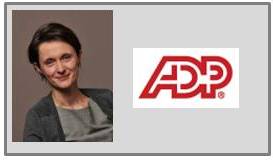
It was a great pleasure for me to participate in the International Colloquium about WOMEN IN TOP MANAGEMENT TEAMS: TRENDS AND FUTURE CHALLENGES and to testify about this subject in two ways.
I’ve been very interested by this question of Gender Diversity in Making Decisions for a long time.
First, because I created my first company when I was 28, and it was not easy at all. For example, it was impossible to open a bank account because I was a young woman ! Then, later, after selling my first company, I decided to become a coach. I created, with my associate Axèle Lofficial, ALOMEY, a consultancy in management and leadership. So, our mission is to help all managers of organisations to become more like leaders, so they would become more engaged, more efficient and more charismatic. In addition, we bring its global reach in service of high potential women’s development, by using methods such as coaching for high potential women or training like Springboard® women’s development programm. This is a professional and personal development program designed for women by women which exists since 1989 with already two hundred thousand participants in the world.
Second, because I did some research about dual-career couples. This study is meant to understand how couples with dual careers achieve a balance between private and professional lives, family and company, personal aspiration and life demands.
The increase in so-called ‘dual career’ couples represents quite a new phenomenon due to recent changes in the proportions of women striving to pursue a career in the same way as a man. The feminization of executive staff and professions has intensified during the past fifteen years, hand in hand with women’s access to higher education. In France, the great universities opened their doors to women about thirty years ago. The first women who were able to pursue these kinds of studies – small in number to begin with – now find themselves in positions of responsibility, sometimes even as directors. Since then, female higher education graduates have entered the employment market in conditions close to those of men, in white-collar jobs and among company executives, even if limitations do exist to the ‘graduate effect’. Even if there is an equality of opportunities for graduates, inequalities remain in professional career paths, and few women become company directors (Laufer, Fouquet, 1997). Many studies have talk about this ‘glass ceiling’ phenomenon. Nevertheless, women are increasingly entering skilled professions, and ‘executive’ and ‘senior executive’ positions are being gradually feminized. If we assume that this phenomenon will increase, the relevance of a study of dual-career couples becomes clear.
What did I noticed with these different experiences in my life?
Above all, this question of Gender in leadership or management is the mirror of history. Women have always worked. Let us simply remember that their positions in companies were generally low-ranking. Moreover, the increase in women’s activity was strongly structured around tasks that constituted an extension of traditional domestic activities. For example, the education of children (childcare, schools and universities), bodily care (health care, beauty care, hairdressing, etc), or household-type activities (cooking, cleaning, hygiene). It was not until September two thousand and six, that for the first time in the very masculine world of large companies, a woman – a 54-year-old American – took over as head of one of the 40 largest French companies. But, for generations and generations, women didn’t learn to develop some qualities not required of them by society !
During a thousand years, men learned to be leaders. They thought in the conditions of their power. They wrote some books. They have some models. They had the theory of the GREAT MAN. Did you hear anything about THE GREAT WOMAN ? We didn’t use this expression! In France, I wrote the first book, in two thousand and ten, written by a woman, about leadership. I refused to write a book about leadership for women, because for me, leadership for women doesn’t really exist.
For the moment, some studies show that the leadership behaviors more frequently applied by women improve organizational performance by specifically strengthening 3 dimensions: people development, expectations and rewards, and role models (Women Matter, 2013 McKinsey). Men apply more: individual decision making, control and corrective action. It’s easy to understand. Our leaders are 50 or 60. Through sports, games and hobbies, when they are children, they learn different behaviors in terms of attitude towards competition, risk taking, setting up strategies, team work, etc. It’s easier to learn some of these matters when you do football than dance or piano, isn’t it?
Our world is changing. The young generation is arriving in our companies. They begin to be different. They are different in front of equality, and some gender behaviors are changing. More and more women want to find fulfillment in the professional sphere and have a career.
So the right question is : how can the manager of tomorrow learn to go beyond gender differences today to build a flexible and performing management style? What sort of leadership do organisations need ?
In a world when some men don’t want to be absent fathers, and some women want to exist outside home, what do you learn about flexibility, work life balance for everybody ? How do these questions impact leadership style, and decision-making at the top of organisations ?
Women and men have to work on these questions.
I noticed that women start to take care about their leadership too late in their career. Men work on their leadership: they work with coaches, they read some books, etc. Women are less aware of the importance of this matter for getting to the top.
Women and men have to work together to understand together where they are coming from and to decide where they have to go now. And everyone, man or woman, possesses a measure of liberty that he or she should be able to evaluate. To know what he or she needs to







